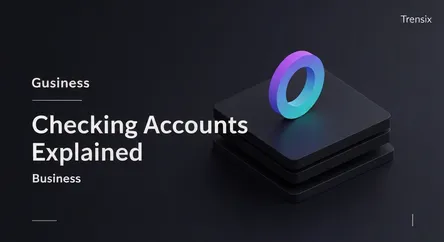Business
Checking Accounts Explained

Learn what a checking account is, how it works, and why it's a fundamental tool for managing your daily finances and personal banking.
What is it?
A checking account is a deposit account at a financial institution that provides high liquidity for daily transactions. It allows for easy deposits and withdrawals using tools like debit cards, checks, and electronic transfers. Unlike savings accounts designed for long-term growth, checking accounts are transactional hubs for managing everyday cash flow. Most are insured by government agencies like the FDIC, offering security for your funds up to a specified limit.
Why is it trending?
The modern checking account is evolving with digital banking. Online-only banks are popular, often offering no monthly fees, higher interest rates, and ATM fee reimbursements. Enhanced mobile apps are now standard, providing features like mobile check deposit, real-time spending alerts, and integrated budgeting tools. As society moves towards cashless transactions and the gig economy grows, a reliable account for electronic payments and direct deposits has become essential for everyone.
How does it affect people?
A checking account is the cornerstone of personal finance. It's the primary tool for receiving income via direct deposit and paying for expenses like rent, utilities, and loans. It offers a secure alternative to carrying cash and creates a clear digital record of transactions, which is vital for budgeting and financial planning. For many, having a checking account is a fundamental step toward financial inclusion, enabling them to manage money efficiently and access other financial products.